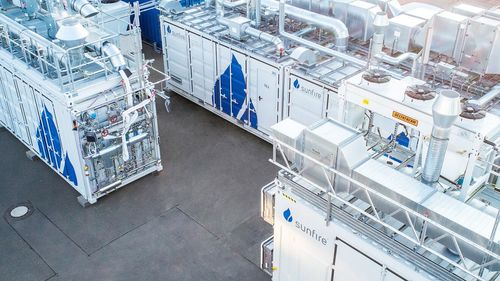The US sustainable aviation fuel industry needs to invest $400bn in new production facilities if the country is to reach domestic SAF production of 27 billion gallons – equal to 2019 jet fuel demand – by 2050.
Federal tax incentives included in the Inflation Reduction Act will drive SAF production in the US, and could bring capacity to 3 billion gallons by 2030 and reach a 100% jet fuel replacement rate by 2050, according to a report from SkyNRG, a Dutch-based SAF producer.
The report highlights the available tax credits in the form of the Sustainable Aviation Fuel Blender’s Tax Credit of $1.75 per gallon; the Clean Fuel Production Tax Credit available from 2025 – 2027; and the Hydrogen Producer Tax Credit of up to $3 per kg for 10 years for facilities operation before 2033.
Constraints on industry growth include the lack of long-term policy stability and potential strains on availability of SAF feedstocks, according to the report.
“To meet aspirational goals in the US, more [project] announcements would be needed,” a summary of the report says, noting that most new projects will likely use feedstock from corn ethanol and waste materials like agricultural waste, waste biogas or household waste.
Even so, deployment of bio-intermediate pathways like RNG in early years is constrained by the pace of project development, permitting new facilities, and federal policy adaptation.
Meanwhile, the report says, fats, oils and grease markets are under pressure; for new projects in this segment – known as HEFA, or HVO – to materialize, feedstock needs to be freed up by diverting from renewable diesel and biodiesel plants or by producing more vegetable oils domestically.
“With ambitious goals at the federal level around electric vehicles and with several states implementing zero-emission truck sales requirements, it is possible that additional feedstock is freed up for SAF,” according to the report. “However, incentives currently favoring the production of biodiesel and renewable diesel over SAF would also need to shift for HEFA capacity announcements to be successful.”
The report additionally floats the following policy prescriptions to make more feedstock available:
• Curbing exports of whole soybeans to yet-to-be developed crushing facilities to increase soybean oil production. This would affect the US trade balance as well as impacting global soybean meal trade flows.
• Large-scale government support for novel non-edible oilseed crops suitable for conversion into fuel. Appropriate safeguards would have to be in place to avoid indirect land use change effects.
• Increasing soybean acreage by 40 million acres from 87 million acres today to meet soybean oil needs. This would impact corn and wheat markets as soy would have to largely expand on existing cropland. This could in turn have consequences for corn ethanol availability.







